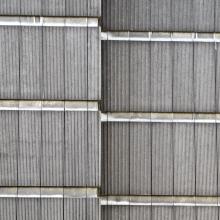
SIGNS OF THE TIMES IN NEW St ANDREW’S HOUSE
Today we continue our exploration of New St Andrew’s House with a look at words – not civil service documents and memos but words printed, etched, and scrawled on the fabric of the building.
There were remarkably few left on the floors we investigated. Perhaps the most redolent of times past are the corridor directions, styled in resolute lower-case Helvetica.
There’s a straightforward clarity of purpose about them, almost a suggestion that – by doing without upper-case letters and distracting serifs – decision making could be purged of class distinctions and bureaucratic obfuscation. Some hope.

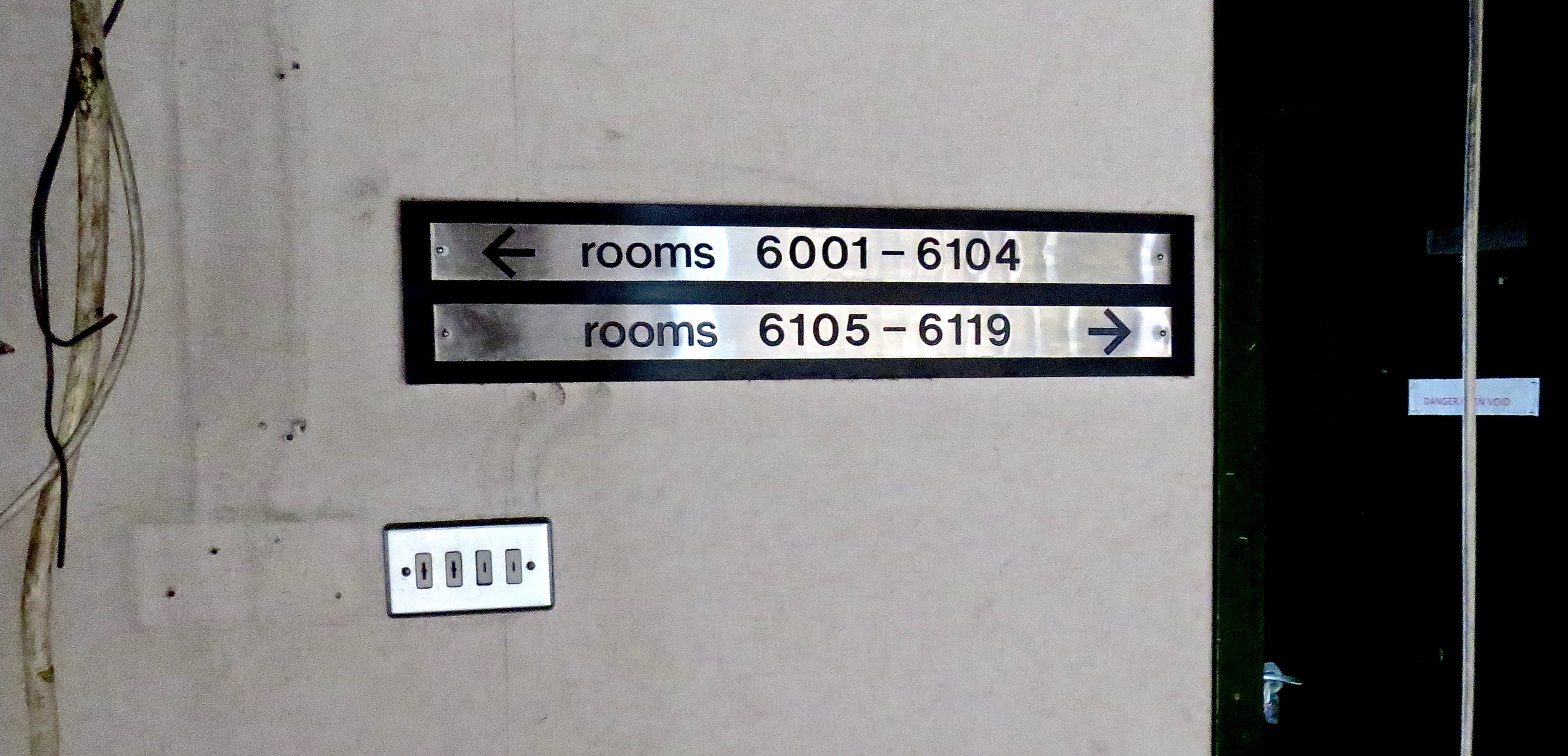
Such democratic typography was everywhere from the 1970s to the mid-1980s, and if you tried to get away from it by travelling you were soon ground down by the dreary legibility of Calvert and Kinneir’s Transport typeface on the road and motorway network, and New Rail Alphabet all over everything else everywhere on British Rail.
Incidentally, there were not 6,119 rooms in New St Andrew’s House. The first numeral refers to the floor level.
More Helvetica in the notice below. For no obvious reason, capital letters reappear at random, like larger members of staff scrambling over smaller ones in their hurry to get out. We like the delicately phrased observation (in American Typewriter) about raising the alarm: ‘The glass is pre-weakened and requires only a light tap with the knuckles’. Close reading of the small print at the bottom reveals that the template for this sign dates from 1984.

There’s an increasing draught the higher up you climb in the building, and much of it seems to be coming via the empty lift shafts.

However, there’s no shortage of holes elsewhere. This sign, left by demolition workers, acts as an irresistible lure to the nosey.
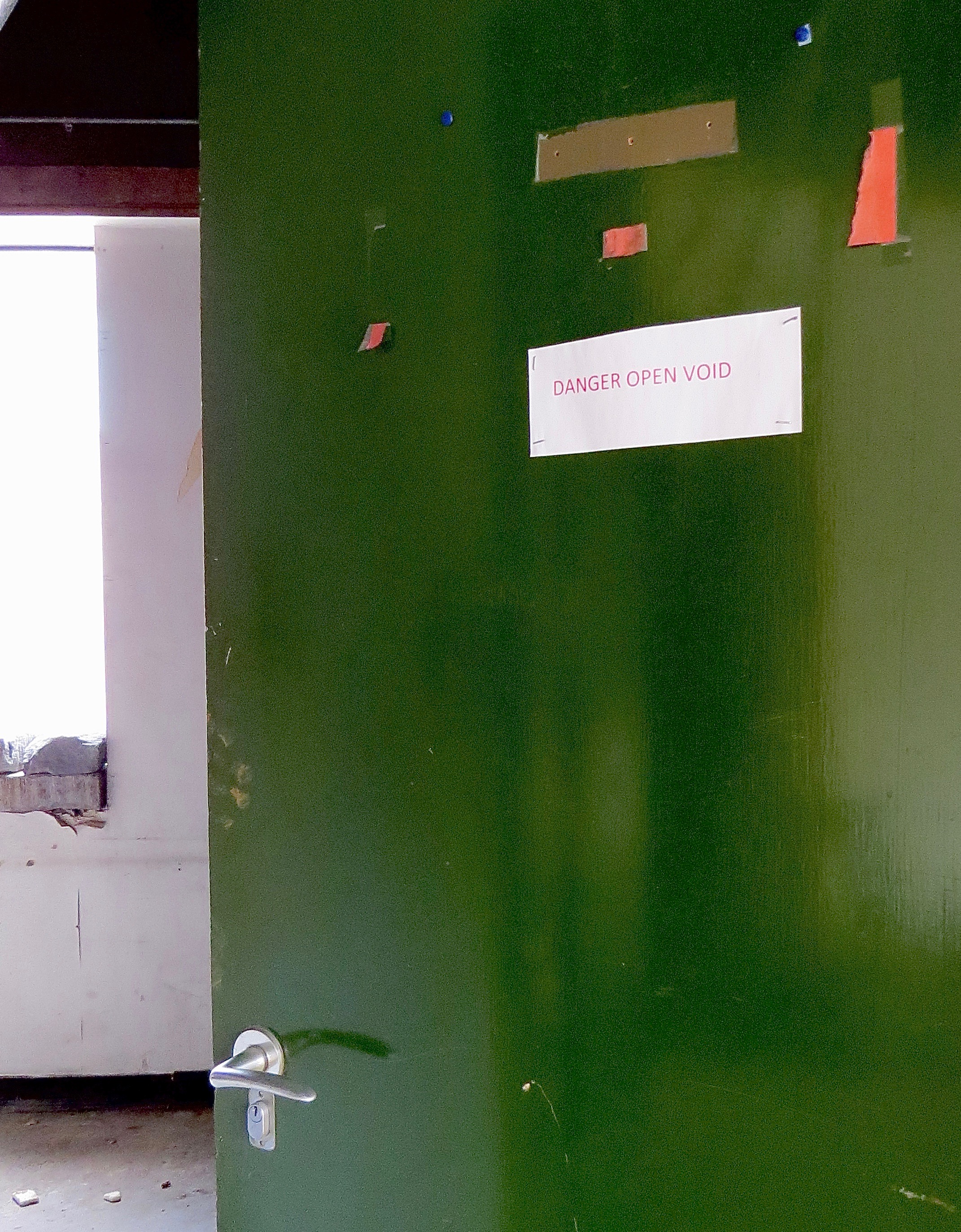
Green seems to have been the colour of choice for doors to rooms containing plant and services.
You can tell a lot about a place and what people like to do there by what they’re told not to do where.
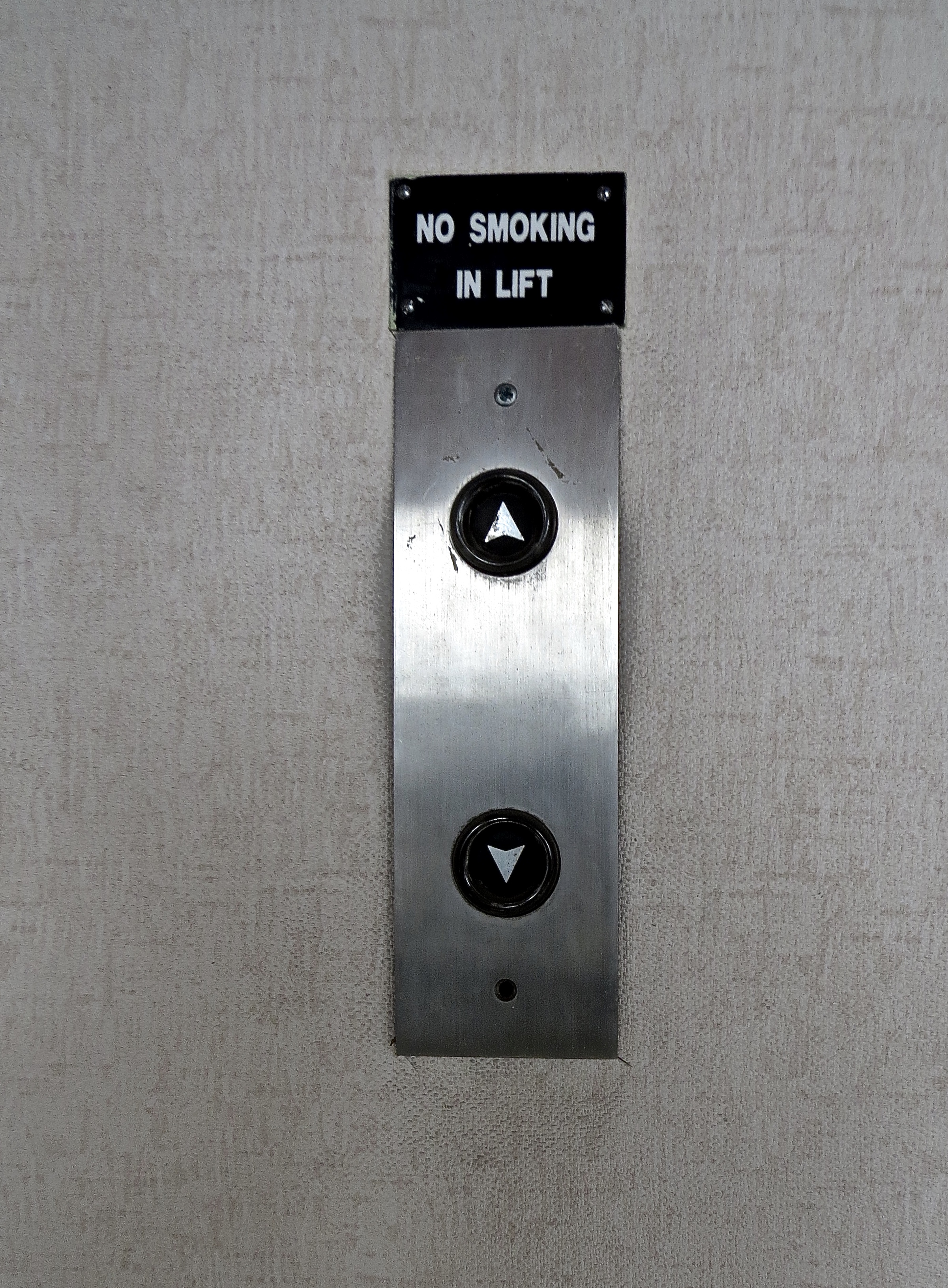
This bodged job reminded us of ‘The Men from the Ministry’.
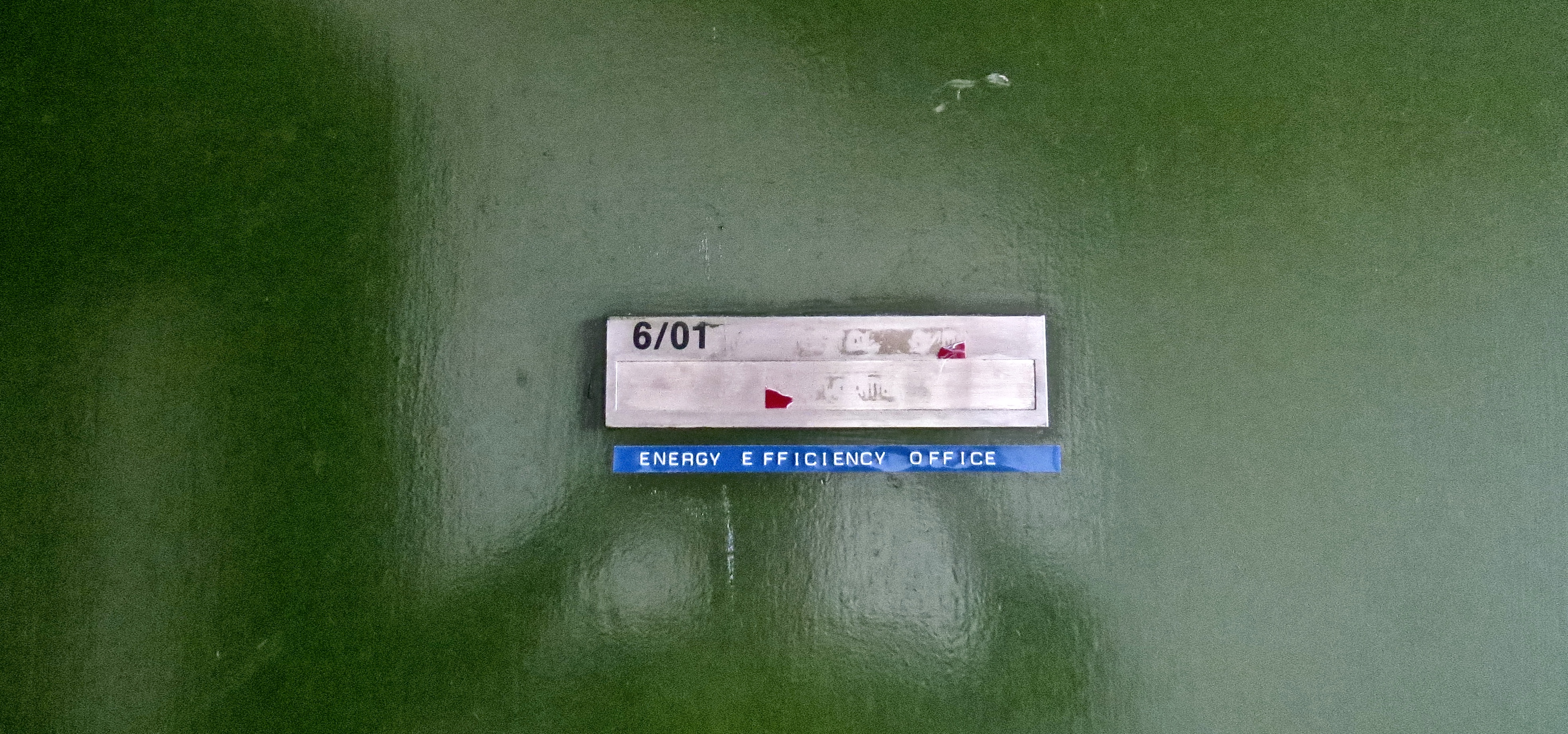
The writing on the wall here reads: ‘WILLIE DID NOT PAY 19/5/72’. That may even be Willie’s head in the bag. If genuine, this dates from when the building was under construction. The 19th was a Friday and ‘Amazing Grace’, played by the band of the Royal Scots Dragoon Guards, was at No. 1 in the charts. A gallon of petrol cost 35p, and the average house price in the UK was a whopping £7,374.

These notices are everywhere. They warn workers not to cut through exposed cables below the windows.

These unappealing sinks suggest the room was used for janitorial purposes.

There’s a caution about hot water, helpfully stuck to the tiles above the hot water tap. And above that a notice in lovely, passive-aggressive, bold Comic Sans, reading:

On the top floor, it becomes apparent that others have already been investigating the asbestos-ridden structure since its closure in 1995. We wouldn’t claim to be expert on Glasgow gang culture, but various groups calling themselves Tongs have existed there since the 1960s, and Vanguard are associated with a section of Rangers supporters keen to ‘preserve their club and Protestant traditions’. If anyone can shed light on the other names/initials here, we’d be interested to know more.
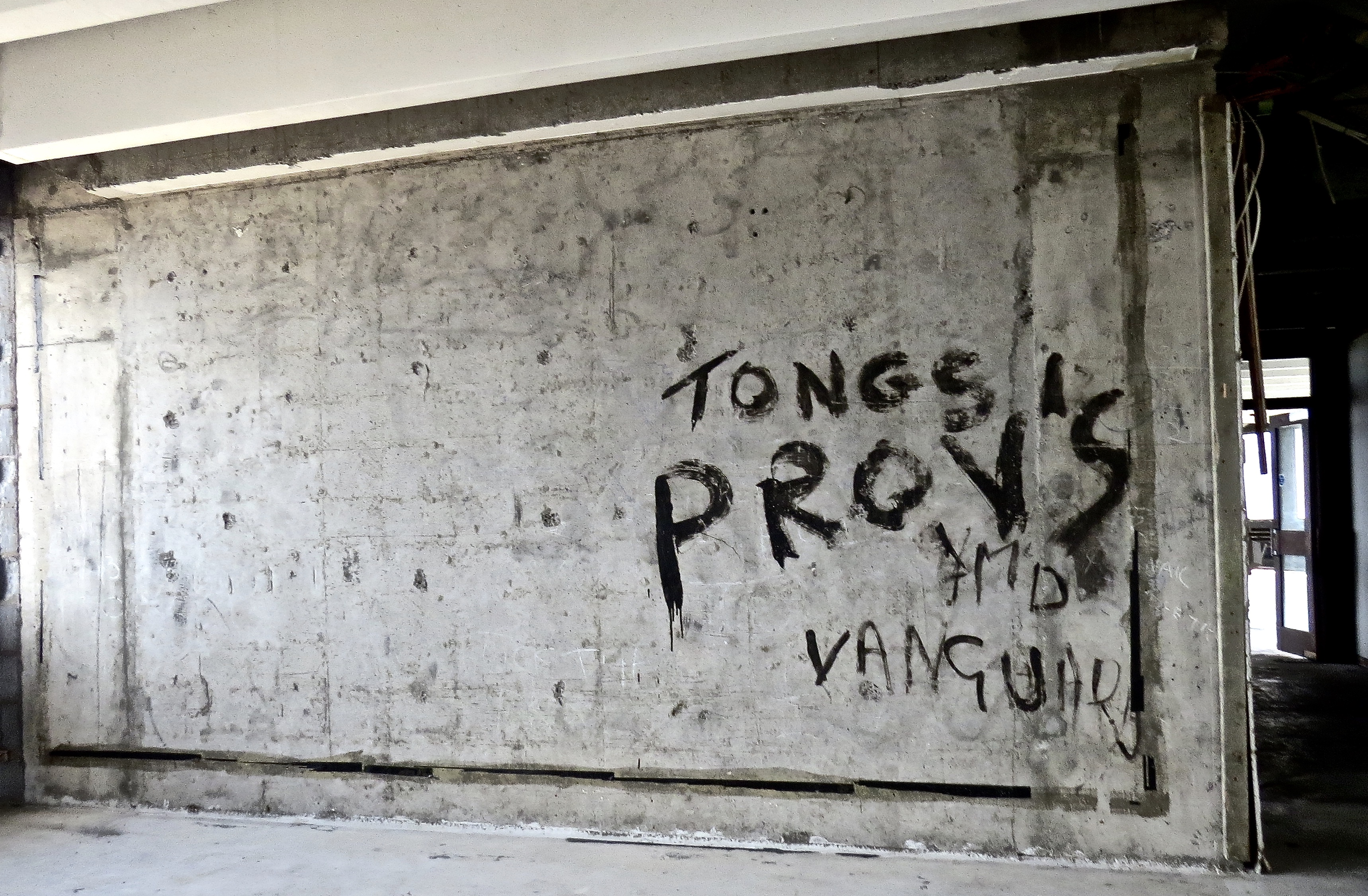
We’re not surprised about Dave. Frankly, if this lot fell on him, we think he’s lucky to be alive.
And finally, at 542 years old, you’d think some people would know better than to go tagging.

We’ll be back inside New St Andrew’s House tomorrow, with an in-depth look at the structure’s plant, cables and piping.
--------------------------------------------------
@theSpurtle good to see all these spaces again. I remember the winds (and suction!) from those open lift shafts #dontgettooclose
 Dominic Berry For those who are interested, there is a fascinating account of the destruction of St James's Square in David Black, All the First Minister's Men (Birlinn, 2001), ch. 13 ("Bohemian Edinburgh brutalised: a battle lost"). It describes the architectural quality of the square, its connections with Burns and Nasmyth, the eviction of the residents (compulsory purchase notices were issued on Boxing Day 1967), and how the exceptionally fine architraves, shutters, doors, fireplaces and cast iron anthemion balconies (designed by Adam) were stripped out, thrown from the windows and burnt in a huge bonfire in the middle of the square. It also describes how the architects of New St Andrew's House battled with civil servants to prevent the new building being even worse: the civil servants wanted the whole courtyard area filled with offices as well.
Dominic Berry For those who are interested, there is a fascinating account of the destruction of St James's Square in David Black, All the First Minister's Men (Birlinn, 2001), ch. 13 ("Bohemian Edinburgh brutalised: a battle lost"). It describes the architectural quality of the square, its connections with Burns and Nasmyth, the eviction of the residents (compulsory purchase notices were issued on Boxing Day 1967), and how the exceptionally fine architraves, shutters, doors, fireplaces and cast iron anthemion balconies (designed by Adam) were stripped out, thrown from the windows and burnt in a huge bonfire in the middle of the square. It also describes how the architects of New St Andrew's House battled with civil servants to prevent the new building being even worse: the civil servants wanted the whole courtyard area filled with offices as well.
 Alan Kennedy This is oddly compelling! Well done.
Alan Kennedy This is oddly compelling! Well done.
@skylinefilmtv @theSpurtle I think we may well miss acpects of this Brutalist monster
@KenWilson84 @skylinefilmtv Suspect you're right. Like vast uncle who – despite multiple convictions – is still integral part of Xmas.


